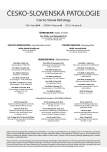A questionable bruise
Arteficiální hematom
I když je to vzácné, lidé si mohou způsobit hematom z vlastní vůle z různých důvodů. Člověk si je může způsobit sám na svém vlastním těle, nebo mu je způsobí druhá osoba s jeho souhlasem. Jsou označovány jako vymyšlené, umělé, vykonstruované, falešné, fiktivní, apod. Je to tupé poranění, proto nejčastěji vzniká přímým působením tupého předmětu, nebo pevným stiskem. U hematomu vzniklého sacím mechanizmem po pečlivé prohlídce můžeme odhalit petechie kolem oblasti pohmoždění. Hematom může být ovšem simulován i aplikací šťáv různé dráždivé zeleniny, kdy vzniká barevná skvrna, která je podlitině na první pohled velice podobná. Okraje takových skvrn jsou však dobře ohraničené. Kromě toho se v těchto lokalizacích mohou objevovat vezikace a pruritus. Diferenciálně diagnosticky je proto nutné důkladné prověření anamnézy a podrobné vyšetření postižené oblasti.
V práci je popisován případ muže ve věku 56 let, s akutním infarktem myokardu, u kterého byl při přijetí jako vedlejší nález popsán subkonjunktivální hematom. Po 4 dnech hospitalizace se u něj objevil hematom vel. 5x5 cm v oblasti břicha s několika nažloutlými skvrnami vel. 3 – 6 cm. Původní subkonjuktivální hematom zmizel. Vznik hematomu byl vysvětlen subkutánními injekčními aplikacem heparinu do oblasti břicha.
Klíčová slova:
arteficiální hematom – ublížení – heparin
Authors:
Hossein Sanaei-Zadeh 1; Kamran Aghakhani 2
Authors‘ workplace:
Medical School, Shiraz University of Medical Sciences, Shiraz, Iran
1; Department of Forensic Medicine and Toxicology, Iran University of Medical Sciences, Hazrat Rasoul Akram (p) Hospital, Tehran, Iran.
2
Published in:
Soud Lék., 59, 2014, No. 3, p. 26-27
Category:
Short Communication
Overview
It is occasionally difficult to distinguish between a self-inflicted bruise and true bruise. The important point of diagnosis is a good, thorough history taking and detailed examination of the affected area.
Keywords:
artificial bruise – assault – heparin
Although rare, people may cause bruises on their bodies using blunt objects, pinching, squeezing, or sucking with different motives. It is occasionally difficult to distinguish between a false bruise and true bruise. However, a good history taking and physical examination will help in giving the final opinion. A 56-year-old man was admitted to the coronary care unit due to acute myocardial infarction. He was a known case of hypertension and ischemic heart disease. On visit, he was complaining of feeling chest pain and nausea after multiple blows to his face and chest during an altercation. On physical examination, subconjunctival hemorrhage in the left eye as well as a right side black eye was seen. Injury to other parts of the body was not detected. Four days later, in general medical ward, he claimed to have another bruise on his abdomen which he had not noticed before. On re-evaluation of the patient, there was a bruise of 5×5 cm in diameter on his abdomen. Also, there were several pale yellowish spots of varying diameter from 3 to 6 cm adjacent to this bruise (Fig. 1,2). The previous bruise around his eye and subconjunctival hemorrhage had completely been resolved. His general medical condition was good.


According to the patient’s clinical chart, in the coronary care unit the patient had been treated by multiple subcutaneous heparin injections in his abdomen. Subcutaneous administration of heparin often causes problems such as bruise, pain, induration, and hematoma at the injection site (1,2). Therefore, this bruise and other spots could not be due to the assault and were definitely because of multiple injections.
Correspondence address:
Dr. Hossein Sanaei-Zadeh
Medical School, Shiraz University of Medical Sciences
Emergency Room/Division of Medical Toxicology
Hazrat Ali-Asghar (p) Hospital
Meshkinfam Street, 7143918796 Shiraz, Iran
e-mail: sanaeizadeh@sums.ac.ir
Sources
1. Avşar G, Kaşikçi M. Assessment of four different methods in subcutaneous heparin applications with regard to causing bruise and pain. Int J Nurs Pract 2013; 19: 402-408.
2. Palese A, Aidone E, Dante A, Pea F. Occurrence and extent of bruising according to duration of administration of subcutaneous low-molecular-weight heparin: A quasi-experimental case-crossover study. J Cardiovasc Nurs 2013; 28: 473-482.
Labels
Anatomical pathology Forensic medical examiner ToxicologyArticle was published in
Forensic Medicine

2014 Issue 3
Most read in this issue
- The Application of X-ray Imaging in Forensic Medicine
- Injuries associated with cardiopulmonary resuscitation
- A questionable bruise
- A case of arrhythmogenic right ventricular cardiomyopathy (ARVC/D) in which tenascin C immunostaining made the assessment of myocardial remodeling possible
